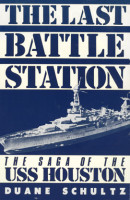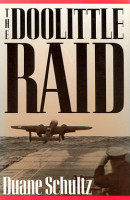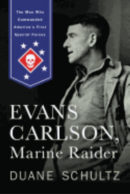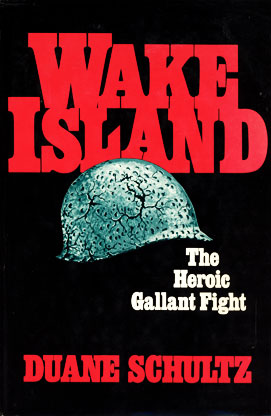Wake Island: The Heroic Gallant Fight
St. Martin’s Press, 1978
It is December 1941. The swiftness and devastation of the Japanese attack on Pearl Harbor is thought to be the most humiliating and overwhelming military defeat the United States has ever suffered. The entire US Pacific fleet is though to have been wiped out, and a day later the Japanese attack on the Philippines reduced General MacArthur’s air force to an obscene pile of rubble. In the weeks ahead, America and her new allies, the British and the Dutch, reel from one lightning blow after another. Disaster and surrender become common daily occurrences.
The Allied position in the pacific has been devastated and no one knows the whereabouts of the Japanese fleet, much less where the seemingly invincible invader will strike next. What seems inevitable, though, is that Japan is determined to strike, invade, and destroy.
But one tiny lonely island that few people have heard of holds on. Numbering 449 US Marines, 68 sailors, 6 soldiers, and a few hundred civilian construction workers, this small force on Wake Island wearing World War I helmets fights on with 4 outdated fighter planes, discarded battleship cannons, and a few machine guns and rifles.
Wake Island: The Heroic Gallant Fight is the gripping story of the men who worked the miracle in those dark days of December 1941. In the end, Wake Island was lost, but not before stalling the Japanese advance and winning valuable time for the Allies. In a sense this was the Allies’ first victory, a brief but glorious glimpse of light, an indication of the bravery and determination that America would demonstrate time and again in the difficult years to come.
Reviews
An outstanding account of the battle for Wake Island at the outbreak of WWII. Schultz offers a well researched and very readable history. . . . An excellent account of the lost cause that bought American forces in the Pacific a little breathing space in the immediate aftermath of Pearl Harbor. Like the battle at the Alamo, the face of the American defenders of Wake Island became a rallying cry. Exciting and well written military history and an excellent tribute to the brace Americans who fought valiantly against hopeless odds to stem the tide of the enemy in the Pacific
Schultz brings a freshness and human element into the day-by-day stand of the defenders
More WWII War Books by Duane Schultz

Hero of Bataan: The Story of General Jonathan M. Wainwright
St. Martin’s Press, 1981

The Last Battle Station: The Story of the USS Houston
St. Martin’s Press, 1985

The Maverick War: Chennault and the Flying Tigers
St. Martin’s Press, 1987

The Doolittle Raid
St. Martin’s Press, 1988

Into the Fire: Ploesti: The Most Fateful Mission of World War II
Westholme Publishing, 2007

Crossing the Rapido: A Tragedy of World War II
Westholme Publishing, 2010

Evans Carlson, Marine Raider: The Man Who Commanded America’s First Special Forces
Westholme Publishing, 2014 hardcover edition; 2017 paperback edition


